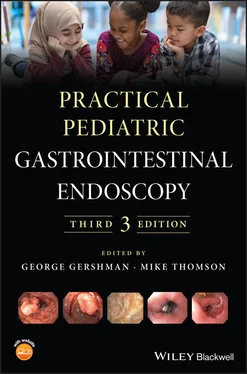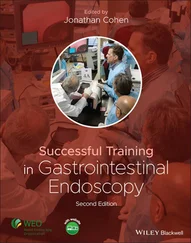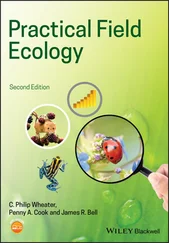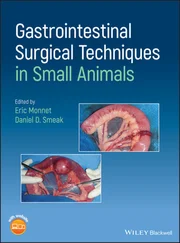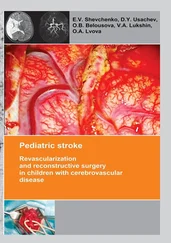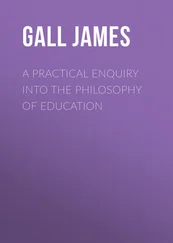1 ...7 8 9 11 12 13 ...26 Erasmo MieleDepartment of Digestive Endoscopy, “Sapienza” University, Sant'Andrea Hospital, Rome, Italy
Jean‐François MougenotMédecin des Hôpitaux de Paris Honoraire, Hôpital Robert Debré et Hôpital Necker‐Enfants Malades, Paris, France
Priya NarulaCentre for Paediatric Gastroenterology and International Academy of Paediatric Endoscopy Training, Sheffield Children's Hospital NHS Foundation Trust, Sheffield, UK
Natalia NedelkopoulouCentre for Paediatric Gastroenterology and International Academy of Paediatric Endoscopy Training, Sheffield Children's Hospital NHS Foundation Trust, Sheffield, UK
Andreia NitaCentre for Paediatric Gastroenterology and International Academy of Paediatric Endoscopy Training, Sheffield Children's Hospital NHS Foundation Trust, Sheffield, UK
Salvatore OlivaMaternal and Child Health Department, Pediatric Gastroenterology and Liver Unit, Sapienza – University of Rome, Rome, Italy
Rok OrelDepartment of Gastroenterology, Hepatology and Nutrition, University Children’s Hospital, University of Ljubljana, Ljubljana, Slovenia
Harpreet PallSection of Gastroenterology, Hepatology, and Nutrition, St Christopher’s Hospital for Children; Drexel University College of Medicine, Philadelphia, PA, USA
Simon PanterDepartment of Gastroenterology, South Tyneside and Sunderland NHS Foundation Trust, Sunderland, UK
Alina Popp“Alessandrescu‐Rusescu” National Institute for Mother and Child Care and “Carol Davila” University of Medicine and Pharmacy, Bucharest, Romania
Antonio QuirosDepartment of Pediatric Gastroenterology, Valley Health System, Paramus, NJ, USA
Prithviraj RaoCentre for Paediatric Gastroenterology and International Academy of Paediatric Endoscopy Training, Sheffield Children's Hospital NHS Foundation Trust, Sheffield, UK
Luciana B. Mendez RibeiroCenter for Pediatric Gastroenterology, Hospital Pequeno Príncipe, Curitiba, Brazil
Claudio RomanoDepartment of Human Pathology and Pediatrics, University of Messina, Messina, Italy
Shishu SharmaCentre for Paediatric Gastroenterology and International Academy of Paediatric Endoscopy Training, Sheffield Children's Hospital NHS Foundation Trust, Sheffield, UK
Mike ThomsonCentre for Paediatric Gastroenterology and International Academy of Paediatric Endoscopy Training, Sheffield Children's Hospital NHS Foundation Trust, Sheffield, UK
Filippo TorroniUOC di Chirurgia ed Endoscopia Digestiva, Bambino Gesù, Rome, Italy
Sabine Krüger TruppelCenter for Pediatric Gastroenterology, Hospital Pequeno Príncipe, Curitiba, Brazil
Dan TurnerJuliet Keidan Institute of Paediatric Gastroenterology and Nutrition, Shaare Zedek Medical Centre, Jerusalem, Israel; Faculty of Medicine, Hebrew University of Jerusalem, Israel
Arun UrsCentre for Paediatric Gastroenterology and International Academy of Paediatric Endoscopy Training, Sheffield Children's Hospital NHS Foundation Trust, Sheffield, UK
Jorge H. VargasRonald Reagan UCLA Medical Center, UCLA Mattel Children's Hospital, UCLA Medical Center, Santa Monica, CA, USA
Krishnappa VenkateshCentre for Paediatric Gastroenterology and International Academy of Paediatric Endoscopy Training, Sheffield Children's Hospital NHS Foundation Trust, Sheffield, UK
Gabor VeresDeceased. Formerly Department of Paediatric Gastroenterology, University of Budapest, Budapest, Hungary
Jerome VialaDepartment of Pediatric Gastroenterology, Robert‐Debré Hospital, Paris, France
Mario VieiraCenter for Pediatric Gastroenterology. Hospital Pequeno Príncipe, Curitiba, Brazil
Catharine M. WalshDivision of Gastroenterology, Hepatology and Nutrition and the Research and Learning Institutes, Hospital for Sick Children, Department of Paediatrics, and Wilson Centre, University of Toronto, Toronto, Canada
David WilsonDepartment of Child Health, University of Edinburgh, Edinburgh, Scotland, UK
About the Companion Website
This book is accompanied by a website
www.wiley.com/go/gershman3e 
All figures from the book available to download in PowerPoint
Videos chosen to show key components discussed in the chapters
Scan this QR code to visit the companion website

Part One Pediatric Endoscopy Setting
George Gershman and Mike Thomson
In the late 1960s, flexible gastrointestinal endoscopy emerged as a novel diagnostic tool but was not employed routinely in children until the mid‐1970s when pediatric flexible esophagogastroduodenoscopes became commercially available. In the decade that followed, there was a significant expansion and application of this modality in children. As the result, many discoveries and improvements in diagnosis and treatment of various pediatric GI disorders have been made despite the limitations associated with light and image transmission through the fiberoptic cables – the technology which only allowed the operator to look down the scope through the eyepiece.
The advent of the microchip with a video camera sited at the tip of the endoscope has advanced the optical imagery significantly. The days of an operator’s watery eye “glued” to the endoscope head and poor‐quality images due to fiber breakage within the optic cables and condensation of water under the lenses at the tip of the instrument are long gone. The only “advantage” of fiberscopes was that no one else knew what you were looking at and there was a propensity for claims such as ‘Oh yes, I got to the terminal ileum’! Nowadays, everyone can see where you are in the GI tract on the screens so there is no hiding …
Modern endoscopes include high‐definition images, high magnification, confocal endomicroscopy with up to 1000× magnification, narrow‐band imaging with focus on various light spectra to allow identification of dysplasia and polyp pit pattern, autofluorescence and other diagnostic modalities. Furthermore, the therapeutic capabilities of the modern endoscope are phenomenal and include up to 3.8 mm working channels and even scopes with two working channels to allow more sophisticated work. Very narrow (4.5 mm) scopes are now available to allow endoscopy in the smallest of infants/neonates and these are now applicable in older children for outpatient transnasal endoscopy without sedation. Three‐dimensional imaging techniques are standard in most colonoscopes which enables identification of loops during ileocolonoscopy, speeding up the process and making it safer and less uncomfortable when it is done without general anesthesia. These concepts are now aided by the use of insufflation using carbon dioxide which is much more quickly absorbed than air.
In addition, endoscopic accessories have developed miraculously and allow many therapeutic procedures to occur which had previously been the domain of surgical options only. These include endoscopic fundoplication, per‐oral endoscopic myotomy for achalasia, percutaneous jejunostomy, duodenal stenosis treatment, fundal variceal ablation, pancreatic pseudocyst drainage and many others discussed in the corresponding chapters of the book.
Читать дальше
